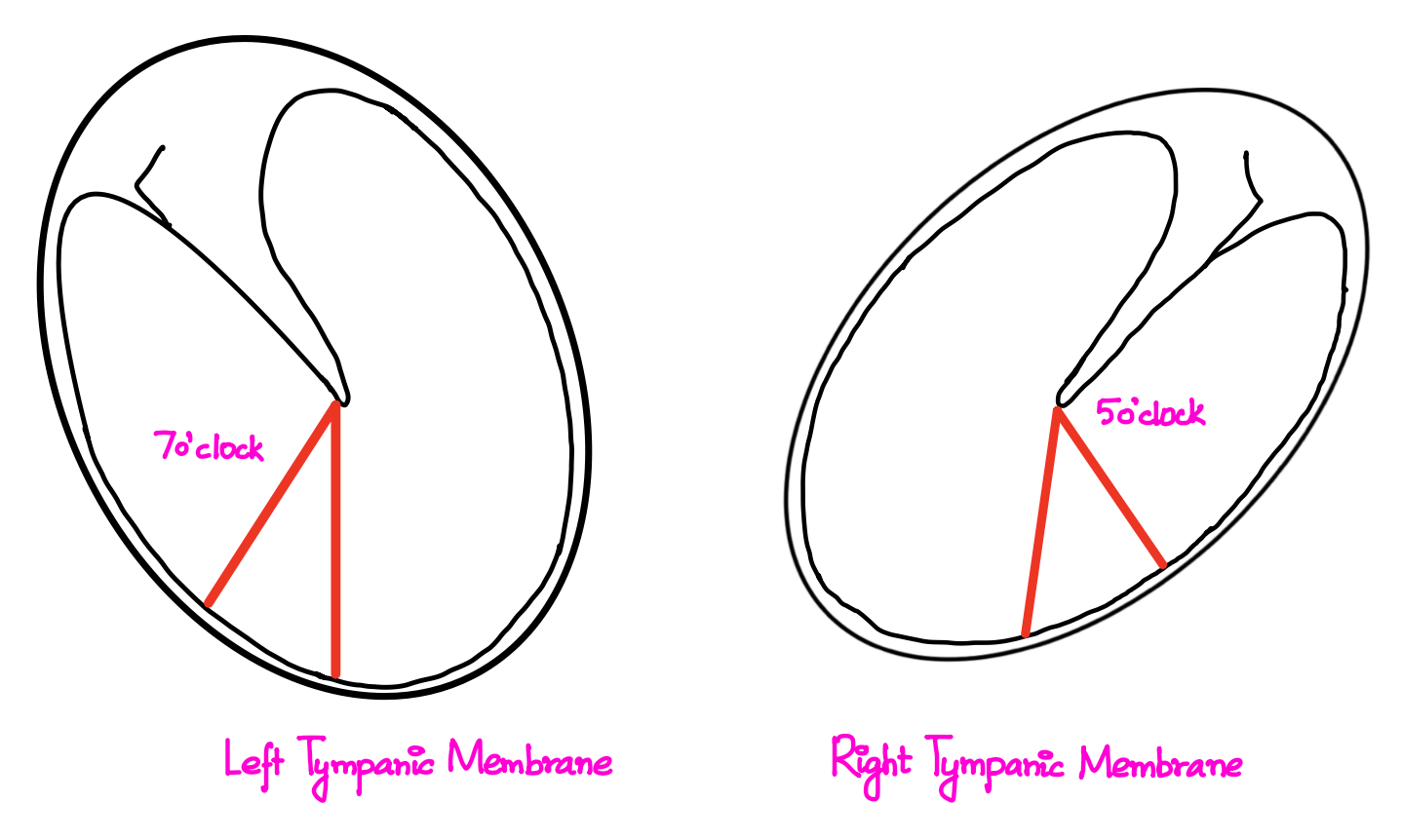How to Draw a Normal Tympanic Membrane
💡 The post below is just an outline of the YouTube video and my notes. For the full content, please purchase the notes using the links above.
🖍 How to Draw a Normal Tympanic Membrane in Under 30 Seconds
In this post, you'll learn how to identify, draw, and label the normal tympanic membrane (TM) — an essential skill for ENT clinical exams, case presentations, and viva questions.

👁 What Structures Are Visible in a Normal Tympanic Membrane?
During otoscopic examination, the following structures can be visualized:
- Handle of Malleus: Long vertical shadow from upper to center
- Umbo: Tip of the handle; causes a central retraction
- Cone of Light: Seen in the anteroinferior quadrant
- Lateral Process of Malleus: Seen near the top of the handle
- Anterior & Posterior Malleal Folds: Extend from lateral process
- Pars Flaccida: Region above malleal folds
- Pars Tensa: Remaining taut portion of the membrane
- Annulus Tympanicus: Fibrocartilaginous ring surrounding the TM
🔍 Occasionally visible middle ear shadows:
- Eustachian tube shadow (anterosuperior)
- Round window (posterior superior)
- Incudostapedial joint (posterior superior)
✏️ Step-by-Step Guide to Drawing a Tympanic Membrane
Check out the YouTube video to see how to draw a normal tympanic membrane.
✅ Basic Outline:
-
Draw a tilted oval to represent the TM.
-
For the right ear, tilt right; for the left ear, tilt left.
-
Remember, the TM is angled at 45–55° to the horizontal.
✅ Add Key Landmarks:
-
Annulus Tympanicus: Outline the rim of the membrane.
-
Handle of Malleus: Long line from top center to umbo.
-
Lateral Process of Malleus: Small dot or bulge near the top.
-
Malleal Folds: Extend from lateral process to annulus (anterior & posterior).
-
Cone of Light: Wedge shape from umbo downwards.
🧠 Mnemonic for Cone of Light:
- Right ear = 5 o'clock position
- Left ear = 7 o'clock position

🔲 Quadrants of Tympanic Membrane
Divide the TM into 4 quadrants for clinical documentation:
| Structure | Description |
|---|---|
| Handle of Malleus | Long vertical shadow |
| Umbo | Tip of malleus handle |
| Cone of Light | Anteroinferior quadrant |
| Lateral Process | Bulge near top of malleus |
| Malleal Folds | Form pars flaccida boundary |
| Pars Flaccida | Above malleal folds |
| Pars Tensa | Rest of the TM |
| Annulus Tympanicus | Fibrous ring around TM |
✂️ How to Divide It:
-
Draw a line along the handle of malleus (long axis).
-
Draw a perpendicular line at the umbo.
This creates 4 clear quadrants for locating perforations or pathology.
📸 Real Image Correlation
In endoscopic views, compare your drawing to real TM appearances:
-
Right TM: Tilted right, cone of light at 5 o'clock.
-
Left TM: Tilted left, cone of light at 7 o'clock.
-
Landmarks such as umbo, malleus, malleal folds, and pars tensa/flaccida remain the same.
🧾 Summary Table
| Structure | Description |
|---|---|
| Handle of Malleus | Long vertical shadow |
| Umbo | Tip of malleus handle |
| Cone of Light | Anteroinferior quadrant |
| Lateral Process | Bulge near top of malleus |
| Malleal Folds | Form pars flaccida boundary |
| Pars Flaccida | Above malleal folds |
| Pars Tensa | Rest of the TM |
| Annulus Tympanicus | Fibrous ring around TM |
🎓 Final Tips
- Practice drawing both right and left tympanic membranes.
- Always label major structures in your schematic.
- Use this skill to draw perforations accurately during long case exams.
📝 All the topics and questions mentioned in this post are explained in detail in my ENT notes - built for exam success and clinical understanding. Get full access by purchasing the notes.